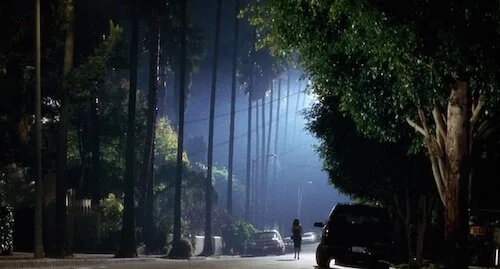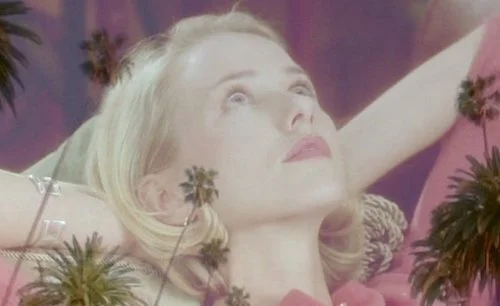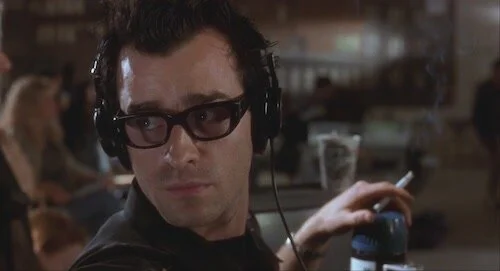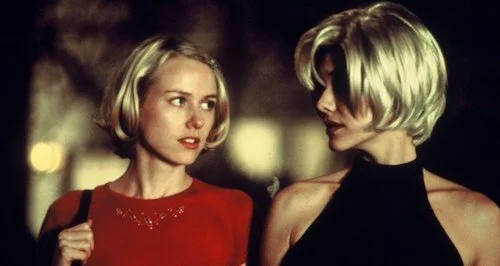Mulholland Drive: On-This-Day Thursday
Every Thursday, an older film released on this opening weekend years ago will be reviewed. They can be classics, or simply popular films that happened to be released to the world on the same date.
For October 12th we are going to have a look at Mulholland Drive.
Never has a depiction of a dream felt so pure. David Lynch has clearly been trying to channel his subconscious since his film school days, where his shorts ranged from inexplicable to “I can’t define this, but I have felt this way before”. The Grandmother is an all out art project, but it’s early evidence that Lynch somehow knew how to create a bridge between performance art and the underground, and conventional audiences. I’m not quite sure why it works, to tell you the truth. I honestly believe it is much easier to look back and connect with such work, than it is to embrace a current piece head-on (if you’re not into avant garde cinema, I mean). Eraserhead is a cult classic, but I for one wasn’t someone that sung its praises when it was first released (I wasn’t even born yet). It’s simple to hop backwards and see the impact these films can have. It’s easy when you’ve seen the evidence through the passing of time. Somehow, Eraserhead and The Grandmother just work, even for mainstream viewers. Maybe it’s Lynch’s quirky humour, his ability to zero in on emotional ambiguities, or due to his filmmaking gift. Lynch has been inspired by many, and he has influenced many more, but no one makes films the way he does. As insane as his works are, almost every single example is a piece of evidence that Lynch is one of the strongest auteurs of all time (excluding Dune, of course).
Mulholland Drive is no stranger to how things typically work in Lynch’s universe. By that, I mean the real world, and how it was recieved. Sure, it got its praise before. However, only now is it being considered the millennium masterpiece that it is. Unlike Eraserhead, I did grow up with Mulholland Drive when it first came out. A young teenage me couldn’t figure out what the hell I was watching. I only discovered the film because of the horror websites I used to follow back when I was a fright junkie. The Winkie’s diner scene was frequently listed as one of the scariest scenes ever. Keep in mind, these rankings happened very shortly after the film was released. I still have my 2001 DVD copy, with barely any special features, all of the digital grain in the world, and the lack of pure video depth that these early discs had. I couldn’t tell you what the hell was going on the first time I viewed this film. All I could say was that I knew something monumental had just happened. I, like many, was witnessing something absolutely magical. I just knew I would never see a film like this again. Having viewed all of Lynch’s films to death, I can still say that even Lynch himself never made Mulholland Drive before, or after. Sure, a lot of his films feel similar, but this particular film, the feelings it evokes, and the ways it captivates you, is a once-in-a-lifetime experience that only this film can offer.
An early shot of Sunset Boulevard: the large palm trees seem ominous here.
I have seen Mulholland Drive countless times, now. I have learned two things. Firstly, the impossibility to figure out what is going on is not true. The more you watch the film, the more it makes sense. Secondly — and on that note — I can promise you I notice a new plot revealing trigger each and every single time I view the film. This is a miracle, folks. This is reliving a dream-like state, but having the luxury of being able to dissect each and every image of your subconscious whenever you want. It will never disappear.
Lynch knows about the recyclability of home video releases. He already cracked the code to the ephemeral nature of television shows, hence why he made Twin Peaks find a way to latch into your memories. We can revisit the Black Lodge whenever we want now, but initially, Twin Peaks had to find a way to drill deep into the pits of your soul, and Lynch knew that the best place to start working was the centre of your brain. Memories, emotions, fears, humour, nostalgia, all of that was going to be mined by Lynch and his works. Mulholland Drive was no different. If VHS and DVD copies of films granted you a chance to revisit films you saw many years ago, why could it not serve the same function for new films? Rather than be caught in the current zeitgeist of a recent release, DVDs allowed us to treat these new films with the same replay-ability. In fact, the earliest releases of Mulholland Drive came with ten clues. This proves that the film is solveable, and that Lynch intended on you revisiting his warped world many times. The ten clues are:
1) Pay particular attention to the beginning of the film: At least two clues are revealed before the credits.
2) Notice appearances of the red lampshade.
3) Can you hear the title of the film that Adam Kesher is auditioning actresses for? Is it mentioned again?
4) An accident is a terrible event… Notice the location of the accident.
5) Who gives a key, and why?
6) Notice the robe, the ashtray, the coffee cup.
7) What is felt, realized and gathered at the club Silencio?
8) Did talent alone help Camilla?
9) Note the occurrences surrounding the man behind 'Winkies'.
10) Where is Aunt Ruth?
This transitional shot is a complete contrast of the earlier, nightmarish look at Hollywood and the palm trees. Here, Betty is bordered by her acting dreams, and the sky is the limit.
Luckily, Mulholland Drive is nearly twenty years old (already). The internet has combed over this film more times than even I have. These clues have delivered enough answers that the film is borderline bulletproof at this point. The internet is old enough to have old, abandoned real estate just like a city or suburb would. Over at the retro-looking mulholland-drive.net domain, the answers to these clues have remained set in stone for many years, with new updates provided for each clue. You can find discussions on many other forums, but this clear relic of cyberspace’s yesteryear just felt more Lynchian to include here.
One of Mulholland Drive’s specialties is that you solve the film yourself. These clues aren’t to help you figure out the ending. They’re to help you understand the narrative period. It’s like a cheat sheet for the avant garde movements that alienated beginner cinephiles for decades. This one is able to be figured out, folks. However, part of the fun is stumbling upon the film’s true intentions yourself. I was halfway through my third watch as a teenager, when the film suddenly clicked. I finally got it. It was like discovering a whole new dimension; just understanding this new entryway would always lead to this place was something that overwhelmed me.
That’s exactly how Betty in the film feels when she arrives in Hollywood: the “dream place”. What’s ironic about all of this, is Lynch’s biggest tribute to tinseltown was initially meant for television. A good portion of the film was initially a pilot episode for Lynch’s next foray onto the small screen after Twin Peaks; perhaps as the televised sister project to the previous film Lost Highway. The pilot was not approved, and the endless void ahead had to be wrapped up in a tidy way. Somehow, the impossible feat was pulled off. All of these wires leading to many different alternate realities had to be straightened out. It’s almost miraculous that Mulholland Drive, in its own insane way, makes as much sense as it does (let alone at all).
Adam Kesher directing the film-within-a-film: almost as if to imply the multiple levels of the subconscious.
Nonetheless, Mulholland Drive remains a giant letter to the world of cinema. It’s part love, part rant. This is seen in both the fantasy and real depictions of filmmaking: the contrasts between “movie magic”, and the film industry as it is. We can kill auditions on the first try, or we can constantly fight to prove our worth to producers, directors, and loved ones. The film’s largest influence is without question Ingmar Bergman’s Persona: the desecration of semblance, the self destruction of a weakened mind, and the doubling of the body through projection and interpretation are key signs. Persona strived to break film apart. Mulholland Drive wanted to rebuild what a broken film can be. There’s no celluloid breaks, repeated scenes, or fourth wall reveals here.
We have a whole aesthetic experience here, that doesn’t mask a broken film, but compliments a daring one. Angelo Badalamenti’s score (by far his greatest achievement, even more than his Twin Peaks work, somehow) is exactly what the film is: the feeling that you’re remembering a forgotten memory. The synapsis cleft in between disjointed feelings, thoughts, and remnants of your past. Each chord is as depressing as it is invigorating. You are haunted while you are being comforted. Peter Deming’s cinematography adores living in the darkest of black shadows, but it loves the heavenly auras of spotlights even more. The departure of these gel lights and stage presences during the moments of reality is highly noticeable, and the surest way to ensure us that it’s all over. This is how it is. This is the coldness of real life: when every colour returns to a neutral state.
Of course, we have to comment on the now-iconic role of Betty, by Naomi Watts: an over-the-top depiction of joy and adoration anchored by a dismal actuality. Laura Elena Harring similarly balances two different essences with ease; this dynamic duo of leading actresses handles the ebbs and flows of Lynch’s coursing narrative with the perfect amount of everything required. Lynch’s film is awkwardly funny, horrifically grim, sincere yet phoney. Watts and Harring embody every single element. It’s no wonder that this kind of role would spark a career. It’s pure serendipity that Watts was about to call her acting career quits, until her role as the wide-eyed actress Betty catapulted her into the stratospheres of Hollywood. Betty’s big break happened, and so did Watts’ (almost at literally the exact same time, if you think about it).
The unknown woman assuming the identity of Rita Hayworth, as if she was “acting” a role.
SPOILERS
I don’t even know where to begin with the actual story, and the pulp of the entire experience. Betty (well, Diane, actually) has an entire road ahead of her, but she has to stop and help “Rita” (actually Camilla Rhodes) to not leave her behind. In her dream state, Diane wants to have one last quick look at Camilla, knowing that she is going to be dead in the real world. Once she spots her in danger (the accident on Mulholland Drive), she cannot leave her behind. She has to save her. She returns, and rediscovers that she loves her. This results in the highly emotional pivot point of the film: a love sequence where Diane knows she wants to move forward with Camilla, claims “I love you”, and doesn’t get a response from Camilla. She doesn’t need it. She just wants to stay here.
But she doesn’t. Camilla awakens, and is compelled to bring Diane to Club Silencio, where the idea of forged realities is introduced (“There is no band, and yet we hear a band”). That’s when Diane knows she’s in a dream. None of this is real, yet she can feel, see, hear, taste and smell it all. The dead girl in the bed assumed the place of Diane’s sleeping corpse (perhaps to instil a self-dread, or prophecy the future). The monster behind Winkies is Diane (or her guilt): the man plagued by this vision was the witness to her crime. The hitman is an idiot in her dream, because she begins to hope that he never got a chance to fulfill his job in killing Camilla. Aunt Ruth is actually dead in real life. Coco has no relation to Diane in any way. The audition she kills is the one she wishes she had. Her monologue reveals she “hates us both”: a reflection on her relationship issues. Camilla Rhodes in her dream is some girl that stole parts, but the real Camila Rhodes is the one that stole her heart. Diane never got it back. Her heart only beats in her dreams, now. As a person, she is as good as dead.
You can provide interpretations for every single moment in this adventure. The cowboy is seen three times by us, so we know Diane did bad. Adam Kesher’s life is ruined in the dream and he has no control over anything. In real life, he has complete control over Diane and the love of her life. We can do this all day, but there isn’t a point. Doing so would only result in Diane’s final thoughts that infiltrate her (like the hallucinations of the elderly couple chasing after her moments before her suicide). The scene after this climax, where visual blurs of Diane and Camilla converging are the other alternative when it comes to understanding Mulholland Drive: allowing all of the cinematic elements to overtake the narrative.
END OF SPOILERS
Betty and “Rita”: one and the same.
That’s something I learned when I had my thirtieth (or so) viewing of Mulholland Drive. Sometimes, it’s not about analyzing the film in the ways that it actually works. Sometimes, it’s just about allowing it to exist, and be the blur in front of your very eyes. Either option is available. The neo noir that uses the comforts of cinematic elements to survive and disguise itself, or the surreal spectacle that consumes your entire self. As a commentary on filmmaking, Mulholland Drive is as bittersweet as can be. As a mystery, it can’t get any more singular than this. As a film (just a straight up film), Mulholland Drive is the drop of a massive weight in the pol of cinema, and the ripples are still extending outwards to this day.
David Lynch knows how to make the underground mainstream. He’s somehow cracked that code. He makes the avant garde tangible. Nothing is sugar coated, either. What about Mulholland Drive is easy, especially on the first watch? It’s as if Lynch (like he does in his films) strives to break the confinements of time and space in our own dimension as well. He does so with cinema. In his films, realities are shattered all of the time. As films, many of his works exist on multiple planes, and without order. Eraserhead, Lost Highway, and Inland Empire are ambiguous brushes with a world we do not know. The Straight Story is as real as it gets. Blue Velvet and Wild at Heart dip their toes into the surreal, but they prefer to remain cohesive. Mulholland Drive is like spotting a unicorn, and studying how it exists simply on its own, abiding by its own fundamental understanding of its own being. It’s as beautifully vague as it is intrinsically complex. I don’t even think Lynch knew what he concocted when he made this film. We may never get a film like Mulholland Drive again, and that’s as depressing as it is heartwarming to know.
Andreas Babiolakis has a Masters degree in Film and Photography Preservation and Collections management from Ryerson University, as well as a Bachelors degree in Cinema Studies from York University. His favourite times of year are the Criterion Collection flash sales and the annual Toronto International Film Festival.










